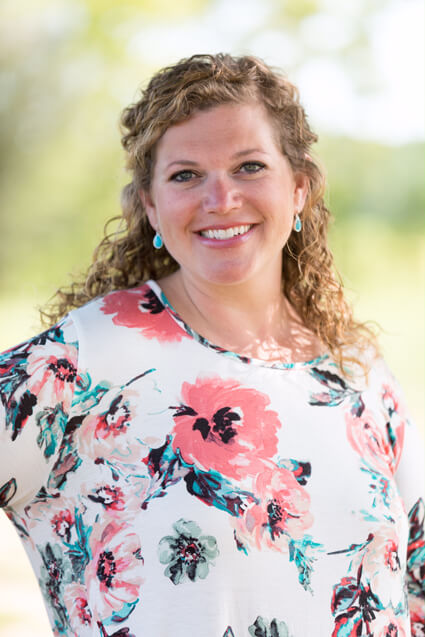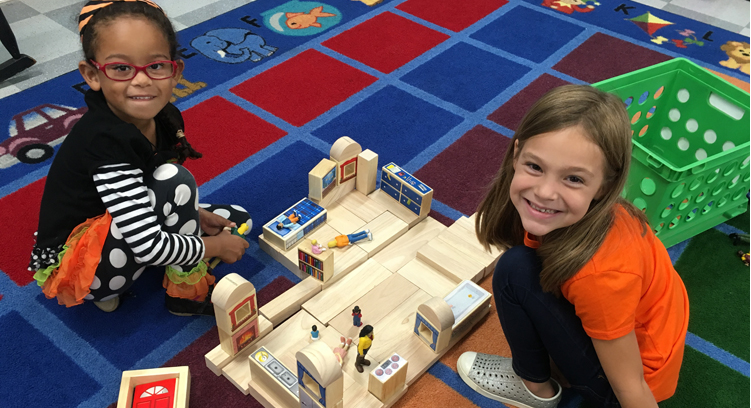Teachers make such amazing differences in the lives of our children each and every day.
That’s why we call our educator recognition program LifeChanger of the Year.
Teachers like Miriam Carman, a kindergarten teacher at Madison Avenue Lower Elementary School in Madison, MS, is a nominee who offers her tips to how she changes young lives.
By Miriam Carman
 Although most educators will see students with a wide range of learning needs in their classrooms, having a student with a labeled disability can often be intimidating or overwhelming. Many teachers worry that they don’t have the experience or education to support students with identified needs. While it certainly is true that some students do require teachers to obtain new knowledge or skills, I have realized that in most cases, all students, even ones with identified needs, can be successful in my classroom simply by expanding or adapting my current practices and strategies already in use.
Although most educators will see students with a wide range of learning needs in their classrooms, having a student with a labeled disability can often be intimidating or overwhelming. Many teachers worry that they don’t have the experience or education to support students with identified needs. While it certainly is true that some students do require teachers to obtain new knowledge or skills, I have realized that in most cases, all students, even ones with identified needs, can be successful in my classroom simply by expanding or adapting my current practices and strategies already in use.
Creating an inclusive classroom environment for all learners has become the way I develop critical thinking for student learning and achievement.
1. Never stop learning. One of the first steps to creating an inclusive classroom environment and possibly the most important is viewing myself as a learner. I realize that I won’t have all the answers when educating some of my diverse learners. After teaching regular education for 9 years, I decided to become certified in special education as well to help my inclusion students close the gap in the regular classroom. Obtaining this certification helped me to see the importance of individualizing instruction based on my students’ needs and interest to ensure all students achieve their full potential. I’ve sought out professional development to help keep my instructional techniques innovative and relevant.
2 Cultivate a productive relationship with students and their families. I work to cultivate a trusting and productive relationship with my students and my students’ families in a variety of ways. I mail a letter to families before school starts to introduce myself. I call families the first week of school to make sure there aren’t any questions and to also share positive news about each child. I take time to learn as much as I can about each of my students, and I let them get to know me as well. I created a book to introduce myself to my class including pictures of me when I was my students’ age, my family, and favorite things. I invite parents into our classroom to present about their work, hobbies, or experiences. I communicate often and in various forms to make sure I’m reaching all families.
3. Be adaptable. Because each day in the classroom can be unpredictable, teachers must be adaptable. I try to model adaptability to show my students how I handle different situations as they arise. Adapting your classroom can also help students with special needs. I provide alternative seating options for students with sensory needs such as wobble stools, scoop chairs, or even laying on the carpet with a clipboard. I play soft music to help with sensory stimulation. You can also change the amount of lighting or cover lights.
4. Keep a routine and stay organized. Our classroom schedule is very structured, and routines are practiced and well known allowing students to feel confident in knowing what to expect. I keep student materials organized and easily accessible for all students.
5. Emphasize respect. Respect for others is discussed routinely and students are encouraged to communicate and connect with others to build a strong classroom community. Students need to feel like they are listened to and that their teacher cares about what they think and feel.
6. Differentiate your lessons. When students don’t succeed in an inclusive classroom, it is often because the lessons in some way are not accessible for students with disabilities. I work to differentiate the curriculum, instruction, and assessments to help all students succeed. I use a wide variety of lesson formats as well as offering many different types of instructional materials. I use the power of peer models to help differentiate instruction and provide opportunities for students to learn new skills such as problem solving, staying on task, or acquiring and/or increasing social and communication skills.
7. Have a good sense of humor. The classroom can be a stressful place. This is especially true when there may be children dealing with behavioral or learning issues. I believe my students need to see me have fun and know that I enjoy being there. Sometimes a good laugh shared with your class can help lighten the mood and shift the atmosphere of the classroom.
TC100021(0318)1

